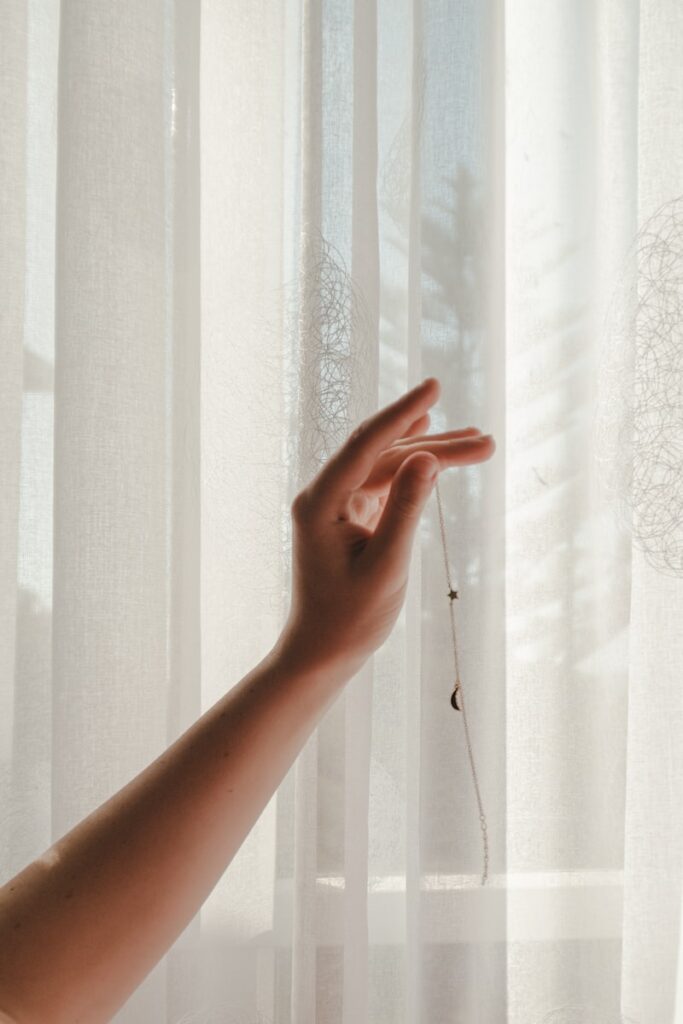Are you looking for new curtains but don’t know where to start? Shopping for curtain fabric can be overwhelming – from figuring out how much fabric is needed to choosing the right pattern or weave. If this sounds like you, then look no further. This blog post will guide you through buying curtain fabric and help you find the best option to fit your needs.
We’ll show you the different types of fabrics available, the factors to consider when shopping, and tips on how to get the most bang for your buck. Let’s dive in and make sure that your curtains are perfect!
Table of Contents
What type of fabric is best for curtains
The fabric you choose can make a big difference in style and function for curtains. Heavy fabrics like velvet and brocade provide an impressive look that keeps the light out for those looking for classic elegance. For contemporary styles, woven fabrics like linen, cotton and polyester are great choices, as they help block out light while still providing texture and interest. If you’re looking for something lightweight and airy, sheer fabrics like organza or tulle offer versatile solutions that let in plenty of natural light without sacrificing privacy.
Is curtain fabric the same as upholstery fabric?
Upholstery fabrics and curtain fabrics have some similarities, but they serve very different purposes. Upholstery fabrics are designed to be resistant to wear and tear, often featuring thicker weaves or heavier materials than curtain fabric. They also give furniture extra padding, providing comfort and support while withstanding everyday use.
Curtain fabrics are lighter and tend to be more decorative than upholstery fabric, also serving the practical purpose of blocking out light and providing privacy. Curtains tend to be made from softer materials like velvet, chenille or silk, whereas upholstery fabrics usually feature more durable, rugged materials like linen or tweed.
Buying curtain fabric for hot climates

For keeping a room cool during the summer months, lightweight and breathable fabrics like linen, cotton, or muslin are ideal choices for curtains. These materials allow air to pass through them while still providing light-blocking qualities. Additionally, they don’t hold as much heat as heavier fabrics such as velvet or silk. Lighter colours can also help keep a room cooler since they reflect sunlight, whereas darker colours absorb it. Sheer fabrics like organza or tulle are even better options for maintaining a comfortable temperature since they provide extra ventilation without sacrificing privacy.
Curtain fabric for reducing heat loss
Fabrics that are heavier and have a tighter weave are best for reducing heat loss. Fabrics such as wool, fleece, and corduroy feature a high insulation-to-weight ratio, meaning they’re better at trapping warm air inside. These fabrics help reduce heat loss in the winter and make great insulators in summer, helping keep a space cooler for longer. Other materials such as velvet, faux fur, and suede are also good choices for reducing heat loss thanks to their thick texture and dense construction.
How do I calculate how much curtain fabric I need?
Calculating the amount of fabric needed for curtains is a simple process. First, measure the width and length of your window or doorway. Then, double the combined measurements to get your fabric length number. For example, if your window is 2 feet wide by 3 feet tall, you would need 6 feet of material. To determine how much fabric you’ll need in width, add the height measurements and divide that total by 36 inches (the standard width of most curtain fabrics).
In our example above, this works out to be 9 feet (3 + 3 + 3 = 9), meaning you would need at least 9 feet of fabric for your curtains.
Calculating for patterned fabrics
Calculating fabric for patterned curtains can be a bit challenging, but it doesn’t have to be. The key is to consider the direction of the pattern and the way it will be placed on the window. When measuring, ensure you account for an extra inch or two along every edge of your window to allow for pattern matching and fabric waste when cutting.
Once you have your measurements, multiply the total width by the total length (in inches) and add 10% to that number to account for any mistakes or oversights. For example, if your window width is 4 feet and height is 3 feet, you would need 54 inches (4 x 3 = 12; 12 + 10% = 13). This means you need at least 13 yards (13 x 36 = 468 inches) of patterned fabric to cover your curtains adequately. There are plenty of options for using up any surplus fabric.
Curtain fabrics that are friendly to the environment
Curtain fabric can have a negative impact on the environment if it is not responsibly and sustainably sourced. Curtain fabrics made from natural materials such as cotton, linen, and wool are more eco-friendly than synthetic materials like polyester or nylon, which require energy-intensive processes.
Additionally, many curtain fabrics contain chemical treatments and finishes that can harm the environment. Look for eco-friendly curtain fabrics with natural dyes and certifications like OEKO-TEX Standard 100, and Choose Natural, organically grown standards when selecting your curtains to reduce the environmental impact of your purchase.